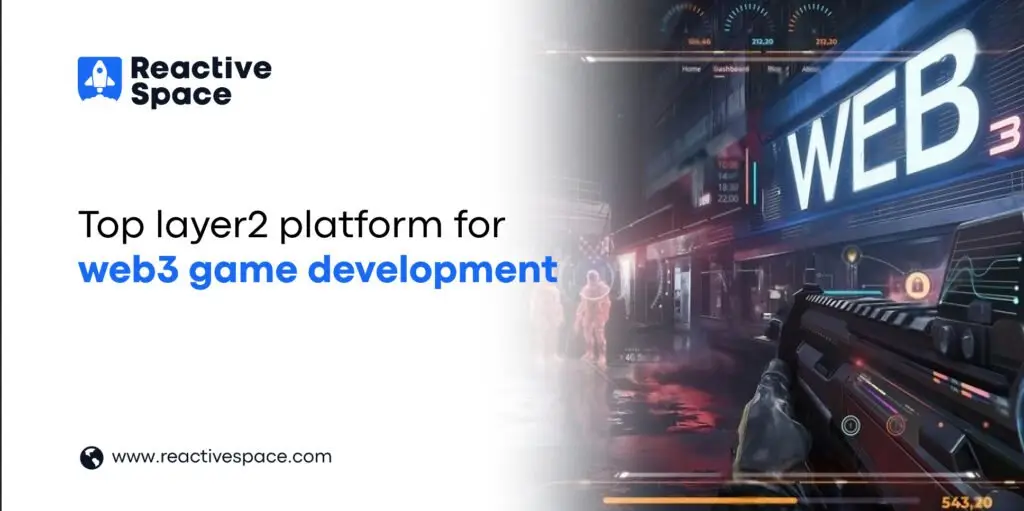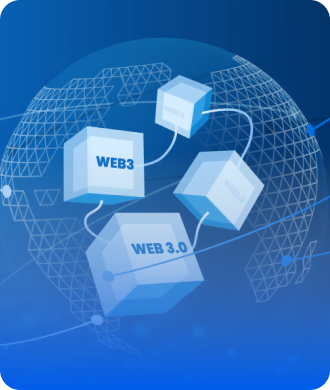
The world of Web3 gaming is booming, offering players ownership, unique experiences, and the potential to earn. However, the core technology, blockchain, often struggle with scalability and high transaction fees. This is where Layer 2 (L2) solutions come in, offering a smoother and more affordable experience for Web3 game developers and players. Let’s explore the top L2 platforms currently powering the exciting world of Web3 gaming, highlighting their strengths and considerations for developers.
What is Layer2 Platform?
Layer 2 platforms are designed to handle transactions off the main blockchain (Layer 1) while using the security and decentralization of the Layer 1 blockchain. They aim to increase the transaction throughput and reduce fees, addressing key limitations like Scalability, Reduced Fees, Security, and Speed of popular blockchains like Ethereum and Bitcoin.
What is Web3 Game Development?
Web3 game development is creating games that use blockchain technology to enhance gameplay and provide new features. Unlike traditional games, Web3 games integrate decentralized elements, such as:
- Blockchain-Based Assets: Players can own, trade, and sell in-game items as unique digital assets (NFTs).
- Decentralized Economy: Games can have their economies, powered by cryptocurrencies and blockchain technology.
- Player Ownership: Players have true ownership of their in-game assets, which can be transferred across different games and platforms.
- Transparency and Security: Blockchain ensures that game mechanics, transactions, and ownership records are transparent and secure.
Web3 game development uses technologies like Ethereum, Layer 2 solutions, and smart contracts to create immersive, interactive, decentralized gaming experiences.
Why Layer 2 for Web3 Games?
While Ethereum remains the dominant blockchain for Web3 development, its control becomes clear in fast-paced and transaction-heavy applications like games.
Here’s where L2 solutions help:
- Scalability: L2 platforms handle transactions off-chain, significantly increasing transaction processing speeds compared to the main chain (Ethereum in this case). This translates to smoother gameplay with minimal lag.
- Reduced Fees: The high gas fees on the Ethereum mainnet can be prohibitive for frequent in-game transactions. L2 solutions offer significantly lower fees, making microtransactions and frequent asset interactions more feasible.
Improved User Experience: Faster transactions and lower fees lead to a more enjoyable and engaging experience for players.
Top Contenders in the L2 Game Arena
Several L2 platforms are competing to lead in the Web3 gaming world.
Here are three of the top ones:
1. Immutable X (IMX):
Focused on building a smooth gaming experience, Immutable X utilizes Starknet’s ZK-Rollup technology. This translates to:
- Ultra-fast Transactions: Immutable X boasts over 9,000 transactions per second (TPS), ensuring a lag-free gaming experience.
- Near-Instant Finality: Transactions are finalized almost instantly, eliminating the waiting times associated with traditional blockchains.
- Gas-free Transactions: Immutable X shoulders the gas fees for most transactions, creating a more user-friendly experience for players.
- Focus on NFTs: Immutable X integrates seamlessly with NFTs, making it ideal for games with NFT-based assets and economies.
Considerations for Developers:
- Limited Interoperability: While Immutable X offers interoperability with the Ethereum mainnet, it’s not as seamless as other L2 solutions.
- Newer Technology: ZK-Rollup technology is still evolving, and the developer ecosystem around Immutable X is developing.
2. Polygon (MATIC):
A well-established L2 solution, Polygon uses a combination of Plasma sidechains and a Proof-of-Stake (PoS) consensus mechanism. Here’s w what Polygon offers:
- High Scalability: Polygon boasts a high throughput of thousands of transactions per second.
- Low Fees: Transaction fees on Polygon are significantly lower compared to the Ethereum mainnet.
- EVM Compatibility: Existing Ethereum development tools and code can be readily used on Polygon, simplifying development for existing blockchain developers.
- Large Ecosystem: Polygon has a rapidly growing ecosystem with numerous established projects, offering potential partnerships and integrations.
Considerations for Developers:
- Security Model: Polygon’s security relies on the Ethereum mainnet, which might raise concerns for some developers.
- Not All Features Decentralized: Some functionalities within Polygon are not fully decentralized, which might not align with the essence of some Web3 projects.
3. Immutable zkEVM:
Immutable zkEVM is a dedicated L2 chain for gaming built on Polygon zkEVM. It combines the power of Immutable X’s focus on gaming with the security and scalability of Polygon’s zkEVM technology.
Here’s what it offers:
- EVM Compatibility: Existing Ethereum development tools and code can be readily used on Immutable zkEVM, lowering the development barrier.
- Scalability and Security: Using Polygon zkEVM’s scalability and inherits security from the Ethereum mainnet.
- Focus on Gaming: Offers features and functionalities specifically tailored to the needs of Web3 game developers.
Considerations for Developers:
- New Technology: Immutable zkEVM is a very new platform, and the developer ecosystem is still evolving.
- Limited Track Record: As a new platform, it lacks the established track record of some other L2 solutions.
Choosing the Right L2 Platform
The best L2 platform for your Web3 game depends on your specific needs and priorities. Consider the following factors:
- Scalability Requirements: How many transactions per second do you anticipate your game needing to handle?
- Transaction Fees: How important are minimal gas fees for your game’s economy?
- Development Tools and Familiarity: What expertise does your development team possess regarding specific L2 technologies?
- Security: How critical is it
Conclusion
Layer 2 (L2) platforms are crucial for the advancement of Web3 gaming, addressing the scalability and high transaction fees associated with main blockchain networks like Ethereum. These platforms handle transactions off-chain while retaining the security and decentralization of the main chain, offering faster and more affordable transactions. In Web3 game development, L2 solutions enable smoother gameplay, reduced costs for in-game transactions, and enhanced user experiences. Top L2 platforms like Immutable X, Polygon, and Immutable zkEVM bring unique advantages such as high throughput, lower fees, and specialized gaming features, making them essential for developing scalable, secure, and user-friendly Web3 games.
Revolutionize Your Game with Web3 Technology
Enhance your game's scalability and user experience with our cutting-edge Web3 development game services.
Get Started Today!


